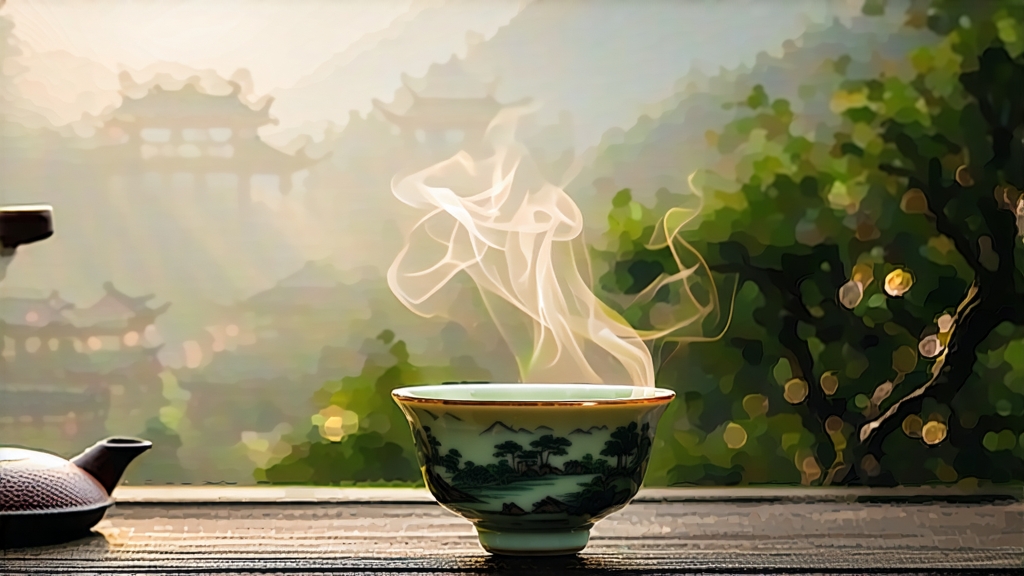
Alishan High-Mountain Oolong, known in Taiwan as “阿里山高山烏龍茶,” is the fragrant ambassador of the island’s central mountain range. Grown between 1,000 and 1,400 metres above sea level, where morning clouds stroke the camphor and cedar forest, this tea absorbs moisture from perpetual mist and ultraviolet light filtered through thin alpine air. The result is a liquor that tastes like orchid nectar, roasted cashew and fresh rain on bamboo.
History
Oolong cultivars arrived in Taiwan during the mid-19th-century Minnan migration, but Alishan itself remained a Tsou aboriginal hunting domain until the Japanese colonial government opened the forest railway in 1912. Japanese agronomists, impressed by the crisp diurnal temperature swing, transplanted Qingxin (Green Heart) and Wuyi stock along the switchbacks between Zhushan and Shizilu. After 1949, retreating Kuomintang soldiers turned abandoned logging camps into smallholder gardens, perfecting the “high-mountain” style that now commands premium auctions in Taipei’s Dihua Street.
Terroir
Alishan is not a single peak but a 20-kilometre ridge system of ancient sandstone and shale. Soils are acidic, rich in iron and manganese, and drain rapidly thanks to 3,500 mm of annual rainfall. At noon the sun burns off cloud cover, raising leaf temperature above 28 °C; by midnight thermometers drop to 12 °C. This stress concentrates amino acids, especially L-theanine, giving the tea its signature milky sweetness. Farmers often plant Taiwania cypress windbreaks whose fallen needles release terpenes that subtly perfume the tea bush.
Cultivars
While Qingxin Oolong remains the aristocrat—delicate, floral, capable of ten infusions—gardeners increasingly hedge risk with Jinxuan (Milky Oolong) for its creamy texture and Four-Season Spring for brisk, jasmine-like top notes. A micro-lot of 200 trees grafted with the rare “Black Heart” cultivar yields a chocolate-toned Alishan reminiscent of Burgundy Pinot Noir; only 18 kg reach market each spring.
Plucking Calendar
Winter dormancy ends when fireflies appear in late March. The first flush, picked Qing Ming week, offers the highest catechins and a crystalline finish. Summer tea harvested after the plum rains carries more pectin, translating into a viscous, bubble-gum body. Autumnal equinox pickings balance both, but quantities are tiny because deer and Formosan macaques compete for the tender buds.
Crafting the Leaf
- Hand-plucking: two leaves and a bud, before 10 a.m., when dew still weighs 3 % moisture.
- Solar withering: spread on bamboo trays under filtered sunlight for 20 minutes to initiate enzymatic oxidation.
- Indoor withering: moved to a 22 °C, 65 % RH loft, tossed every hour for 8 hours; the leaf edge reddens while the vein stays green.
- Shaking: the “green dragon out of water” step—leaves tumble in a waist-high bamboo drum rotating 18 rpm, bruising cell walls to release floral precursors.
- Fixation: a 260 °C drum roaster for 3 minutes halts oxidation at 25 %, preserving the half-green, half-amber character.
- Rolling: the hot leaf is wrapped in cotton cloth and compressed into a ball-rolling machine that rotates 45 times per minute for 15 minutes, repeated 25 cycles. This tight sphere traps aromatic oils that will unfurl like fireworks in the cup.
- Drying: 80 °C hot-air oven reduces moisture to 5 %, stabilising the leaf for mountain transport.
- Charcoal finish: traditionalists spend six hours over longan-wood embers at 60 °C, imparting a whisper of smoked honey that complements the natural orchid aroma.
Roast Spectrum
Alishan can be found along a sliding scale of fire. “Light floral” (qing xiang) is pale jade liquor, gardenia nose, sold in vacuum tins within six months of harvest. “Medium roast” (zhong huo) rests for three months to let residual charcoal volatiles settle, yielding a deeper gold cup, toasted almond and baked apple. “Heavy roast” (zhong yan) spends 20 hours over ash-covered embers, emerging